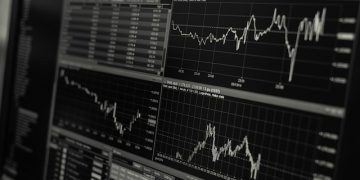The writer is co-chief executive of Dimensional Fund Advisors
Tesla’s stock rose eightfold in 2020, generating an extraordinary return in a year full of uncertainty. Looking through the lens of financial science, it’s worth asking what implication Tesla’s return has for investors.
Stock prices are set by the trading between buyers and sellers. Fierce competition ensures that new information is reflected the instant buyers and sellers begin trading on it. This process makes stock prices our best prediction of the future.
In the 1960s, two approaches were developed to test the efficacy of such predictions. The first analyses stock price changes to determine whether they reflect all available information. The second tests the performance of professional investors for evidence they can reliably predict future stock prices. The insights from the work of academics Eugene Fama and Michael Jensen have been confirmed numerous times: trying to outguess share prices to beat the market is a losing endeavour.
Markets price securities to provide investors adequate compensation for bearing uncertainty. For those wondering whether the technologies developed by Tesla, Facebook, Alphabet, and their peers somehow change this basic principle, the answer is an emphatic “No.”
Judging by the past 100 years, new technologies changing how we live are nothing new. The companies that create the technologies that are most useful to us often become the biggest companies globally by market capitalisation. You might hear that we live in a “new normal” but the truth is that disruption is “normal”.
Differences in uncertainty across companies result in differences over how forecast cash flows are valued today, and are reflected in the discount rate applied to them by investors. This discount rate applied to forecast future cash flows is the investor’s expected return. When the discount rate is high, prices are low relative to expected cash flows and expected returns are high. New technologies generate uncertainty about which companies will win.
I expect investors to continue to apply different discount rates to stocks with different exposure to uncertainty. This is the intuition behind the value premium. Value stocks are those with low prices relative to some fundamental measure of firm value or forecast net cash flows. Empirical research using almost 100 years of data supports this; the average annual return of value stocks is 3-4 per cent higher than that of growth stocks.
Professor Kenneth French recently wrote, “Investment returns have two parts: the expected return and the unexpected return. The expected return is the best guess of what will happen based on all the information currently available. The unexpected return is the surprise, the difference between what does happen and what was expected.”
This is important because stock prices, acting as the market shock absorbers, adjust continually so investors get adequate expected returns as news unfolds. What caused such an increase in the share price for Tesla stock last year?
Maybe it’s the anticipated increase in demand for electric vehicles, increased demand from index funds because of its inclusion in the S&P 500, or more investors wanting to say “I hold Tesla stock”. Likely it’s some combination of all of these and much more
We will never know with certainty the reason any stock’s price changes, but we can infer two things with confidence. First: an eightfold return in a year is unexpected. Realised stock returns accrue to buyers not sellers. Tesla issued new shares frequently in 2020. It was selling its stock. It is unlikely a company expecting its stock price to increase so much faster than the market would do this.
If such a large return was expected, the demand for the stock would simply push prices up and drive expected returns down to a more reasonable level. Second: if you viewed Tesla as a growth stock with a low expected return at the start of 2020, it’s reasonable to view it as an even lower expected return growth stock after such a big price increase.
While previously unknown information and changes in investor preferences will change prices and determine realised returns each day, the data strongly support that the longer the investment horizon, the higher the probability that value stocks will outperform growth stocks.
This effect would disappear if the expected return of all stocks was the same. Some things are certain in investing: the future is uncertain and the level of uncertainty is not the same for all stocks.




